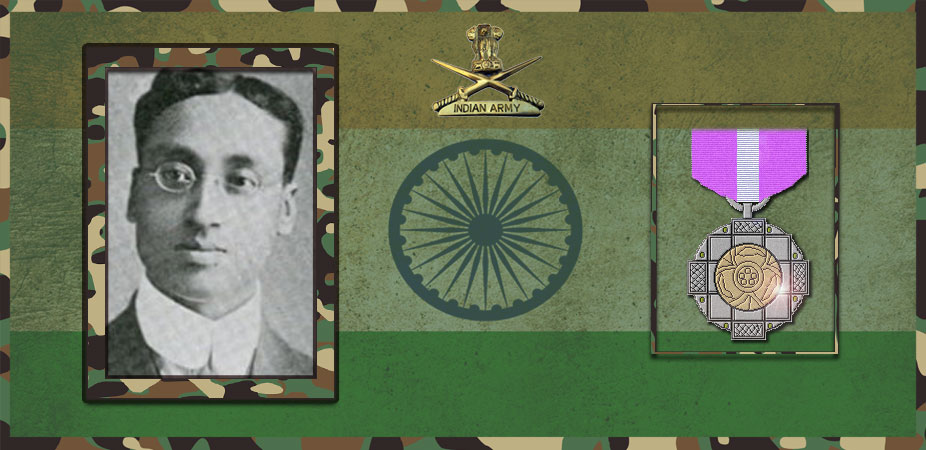Let's salute to our Indian Army together, We are proud to be Indian.
Let's salute to our Indian Army together, We are proud to be Indian.

Sisir Kumar Mitra MBE, FNI, FRS (October 24, 1890 – August 13, 1963) was an Indian Bengali physicist. Mitra was born in his father’s hometown of Konnagar, a suburb of Kolkata (then Calcutta) located in the Hooghly District in the Bengal Presidency (present-day West Bengal).He was the third son of Joykrishna Mitra, who was a schoolteacher at the time of Mitra’s birth, and Saratkumari, a medical student whose family came from Midnapore. While Mitra’s paternal family were orthodox Hindus, his mother’s family were adherents of the progressive Brahmo Samaj, and were noted in Midnapore for their advanced outlook.In 1878, Joykrishna Mitra had joined the Brahmo Samaj and married his wife, against the wishes of his family, who responded by severing ties with him. As a consequence, the newly wed couple moved to Saratkumari’s hometown of Midnapore, where Joykrishna and his wife had two sons – Satish Kumar and Santosh Kumar – and a daughter before Joykrishna moved his family to Kolkata in 1889 there, he became a schoolteacher. Mitra was born the following year.
While in Kolkata, Joykrishna became acquainted with several distinguished scholars, notably Ishwar Chandra Vidyasagar and Bipin Chandra Pal. Sharing Saratkumari’s progressive outlook, Joykrishna secured his wife’s admission as a student at Campbell Medical College. In 1892, Saratkumari qualified as a physician and received an appointment at the Lady Dufferin Hospital in the city of Bhagalpur, then in the Bengal Presidency (now in Bihar). The family thus moved to Bhagalpur, where Saratkumari began her new career, with Joykrishna securing a position as a municipal clerk. A third son, Mitra’s younger brother Sarat Kumar, was born at Bhagalpur shortly after.
In Bhagalpur, Mitra began school at the Bhagalpore Zilla School. Around 1897-1898, when aged six or seven, his interest in atomospheric science began after hearing the story of Ramchandra Chatterjee, a Bengali aeronaut who a year before Mitra’s birth, on 4 May 1889, had become the first Indian to make a solo balloon flight. The story prompted Mitra to ask his elder brother Satish Kumar about the principles of lighter-than-air flight his brother explained as best as he could. A few years afterwards, both of Mitra’s elder brothers died following this harsh blow, Joykrishna soon suffered a paralytic attack and became an invalid. Despite the family’s increasing financial burdens, Saratkumari managed to educate her two surviving sons. During his childhood and adolescence, Mitra nurtured his interest in science through reading popular scientific articles by leading Bengali scientists, including some by Jagadish Chandra Bose. After passing his examinations from the Bhagalpore Zilla school, Mitra was admitted to the FA (intermediate-level) program at the T.N.J. College his father Joykrishna died shortly after.
After passing his FA examinations in 1908, Mitra was admitted as a student in Presidency College of the University of Calcutta where he earned a B.Sc. He continued to develop a passion for physics and scientific research, and was accepted by Jagadish Bose as a research scholar upon completing his master’s degree in 1912 with the highest honours. He worked under Professor Bose for a few months before being forced to end his studies due to his family’s financial difficulties
To support his family, after leaving the University of Calcutta, Mitra secured an appointment as a lecturer at his former college, T. N. J. College.Following a brief period there, he was appointed a lecturer at Bankura Christian College. Frustrated by the lack of research opportunities at both institutions, Mitra channelled his energy into developing innovative experiments to demonstrate to his students and writing popular scientific articles in Bengali. He married in 1914, and two years later was invited by Ashutosh Mukherjee to return to Calcutta University as a post-graduate physics scholar in the new University Science College. There he conducted research into the diffraction and interference of light under C. V. Raman for this work, Mitra gained a D.S. degree in 1919, also publishing three papers in the Philosophical Magazine.
After receiving his doctorate, Mitra left for France in 1920 to continue his studies at the University of Paris. There he earned a second doctorate under Charles Fabry in 1923, for a thesis on the determination of wavelength standards in the 2000-2300 A region of copper.He subsequently worked briefly under Marie Curie at the Curie Institute. Made aware of continual developments in the new science of radio communications, Mitra went to the University of Nancy and joined the laboratory of Camille Gutton. Under Gutton, Mitra conducted research on radio valve circuitry before returning to India in late 1923
Prior to returning to India, Mitra had corresponded with Ashutosh Mukherjee about the growing importance of wireless science and the need to include it in the post-graduate physics curriculum at the University of Calcutta. Upon his return to Kolkata, he was appointed the university’s Khaira Professor of Physics. With Mukherjee’s support, in 1924 a “Wireless” course was introduced as an elective in the Physics MSc. curriculum and a Wireless Laboratory established for research in electron tubes and radio wave propagation.He also initiated a new department at the University of Calcutta that later became the Institute of Radio Physics and Electronics.
In 1955 he retired from the university, becoming emeritus professor. He was given charge of the West Bengal Secondary Education Board, and spent six years organizing this administrative body.
He died following a short illness.
Among his accomplishments were his investigations into the ionosphere. Dr. Mitra proposed that ultraviolet light from the sun created the middle, or E layer, of the ionosphere. He also determined that ions in the ionosphere’s F layer were what caused luminescence of the night sky, giving it a dusty hue rather than pitch black. In 1947 he published a reference treatise titled “The Upper Atmosphere” on atmospheric research.
Awards and honors